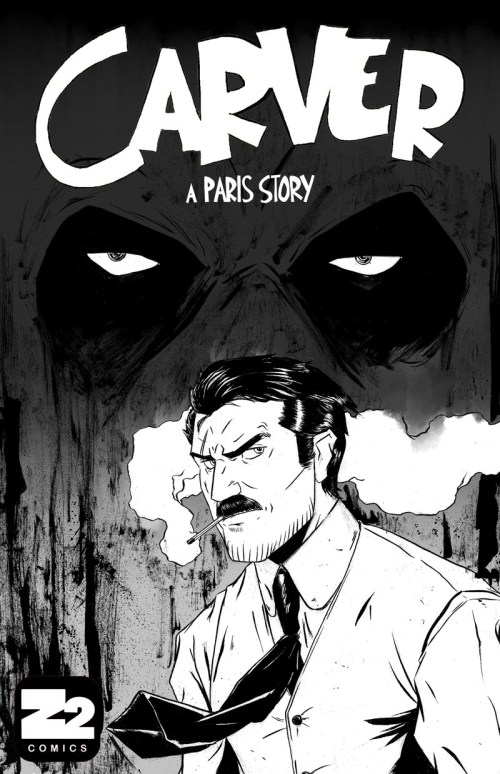
Silver: Of Treasures and Thieves, Book I is out as of October 25, 2022, published by Abrams. It is a deluxe hardcover edition and quite the immersive treat for anyone who loves a good yarn, especially one that takes much of the good stuff from pulp fiction and gives it a good tweak, a veritable mashup of adventure lore and vampire gore.

The meta pulp universe of Silver.
There’s no doubt that Stephan Franck has created something very special with Silver, a graphic novel set in a pulp noir universe of misfits, criminals and, of course, vampires. During our interview, I drive home the theme that much of the charm of this story is the journey and in the telling. This is absolutely an adrenaline-fueled adventure tale while also simply being a dazzling and mesmerizing play of words and images. The beauty of it all is that Franck has created a set of characters that you can really root for while, at the same time, is playing with tropes and just having fun. You can care about the characters or you can just curl up with a cup of hot cocoa and enjoy the style.

Stephan Franck at the drawing board.
Part of the pitch to this book is a comparison to the vibe you get from Bram Stoker’s Dracula or the original Ocean’s Eleven. These are two very different animals but, at the end of the day, we’re talking about a high level of entertainment, be it high or low art or a mashup of the two. Bram Stoker’s Dracula has never gone out of print since it was first published in April 1897. It was a bestseller in its day and is regarded as high art literature. Ocean’s Eleven was a big hit when it first appeared in movie theaters in 1960. It is an American heist film directed by Lewis Milestone and made the stars of the movie famous as the Rat Pack. It is one of those movies with a high level of irony that seemed to want it both ways: not to be taken seriously and yet leave you guessing. In a word, it was all about atmosphere. Take these two entertainments and roll them up into a fine paste and you’ve got yourself a gooey and frothy mix of the sinister and the ambiguous. Just the sort of clay to play with when looking to create the next pop culture mashup.

Think about pop culture in the last few decades, starting with, say, the treatment of Batman by Frank Miller, in The Dark Knight trilogy. There’s one of your finest examples of what has come to be accepted as working in an “elevated genre.” That’s the whole point. As Franck states, the idea is to “tell the most universal stories in the weirdest way possible.” And that’s what Silver is all about. You’ve got soldier of fortune types at odds with vampires. What could go wrong, right? Except for a roller coaster of a story for your delight.

Be sure to keep up with Stephan Franck here and here. And seek out SILVER, published by Abrams.
I hope you enjoy this video podcast. And, as always, a LIKE, SUBSCRIBE and/or COMMENT is always appreciated.

































